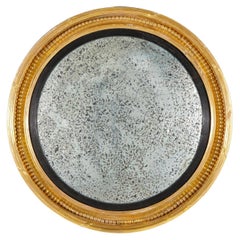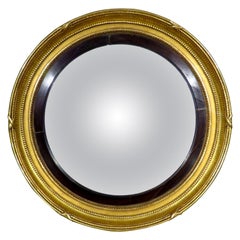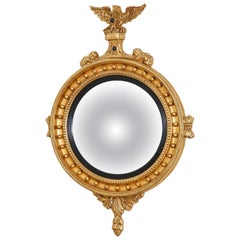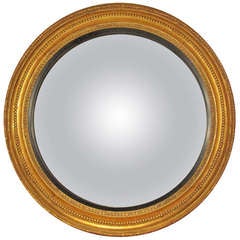Large Bullseye Convex Mirror
Antique Mid-19th Century British Regency Convex Mirrors
Mirror, Giltwood
Antique Early 19th Century English Georgian Convex Mirrors
Giltwood, Gesso, Mirror, Pine
20th Century American Regency Convex Mirrors
Brass
Recent Sales
Antique 19th Century English Convex Mirrors
Mirror
Antique 19th Century British Regency Convex Mirrors
Giltwood, Glass
Antique 1830s English Regency Wall Mirrors
Giltwood, Mirror
Antique Mid-19th Century American Neoclassical Convex Mirrors
Giltwood
Late 20th Century English Regency Convex Mirrors
Giltwood
People Also Browsed
2010s British Organic Modern Wall Mirrors
Brass
Antique 18th Century Other Dinner Plates
Enamel
Vintage 1950s More Candle Holders
Glass
Vintage 1940s American Louis XVI Dressers
Brass
Antique 1790s English Regency Sideboards
Brass
Antique Early 19th Century Swedish Neoclassical Wall Mirrors
Wood
Antique 1820s American American Empire Knife Boxes
Mahogany, Pine
Antique Early 19th Century English Regency Armchairs
Brass, Steel
Antique 1760s Scottish Chippendale Card Tables and Tea Tables
Brass
Antique 1790s English Regency Bookcases
Brass
Antique Mid-18th Century English George III Commodes and Chests of Drawers
Boxwood, Mahogany, Tulipwood
20th Century Regency Dining Room Tables
Mahogany
Antique 18th Century English Regency Dining Room Sets
Mahogany
Antique 18th Century English Regency Dining Room Sets
Mahogany
Antique Late 18th Century English George III Wall Mirrors
Gesso, Giltwood
Antique 18th Century English Regency Dining Room Tables
Mahogany
Finding the Right Convex-mirrors for You
As a decorative piece, an antique or vintage convex mirror draws the eye, thanks to its rounded surface.
Like other kinds of mirrors, a convex mirror can act as a focal point for a room, spicing up a traditional accent wall, for example, or as an art piece hung above a sofa in your living room. The appearance of convex mirrors has changed significantly throughout time, ranging from those in the neoclassical style with a decorative border to futurist convex mirrors with ultrasmooth or rounded shapes.
Convex mirrors were developed in 14th-century Venice and gained popularity across Europe in the following centuries. They were regularly included in portrait paintings from the time, such as Jan van Eyck’s famed Giovanni (?) Arnolfini and his Wife (1434), cementing their status as luxury objects.
The establishment of glassblowing workshops in Europe led to the availability of the dome form for convex mirrors, with the inside often coated with molten lead or tin to create a reflective surface. Even though mirrors have become easier to produce over time, the convex mirror — like any attractive Art Deco mirror, Hollywood Regency–style mirror or dramatic wall mirror — remains a sought-after item.
Find the perfect antique and vintage convex mirror for your home on 1stDibs.
Read More
20 Artfully Crafted Mirrors to Frame Your Reflection
In "Object Permanence 4," on view at the 1stdibs Gallery, Emma Holland Denvir and Leah Ring have brought together pieces that range from polished to playful.
Unexpected Furniture Pieces Made from Clay
A new generation of creative minds is reinventing the use of clay through sculptural forms and bold ideas.
5 Standout Contemporary Mirrors (and How to Decorate with Them)
Leading talents tell us what goes into their mirrored creations and where to put them on a wall.
12 Rooms with Dramatic, Unexpected Mirrors
These are the fairest of them all.




